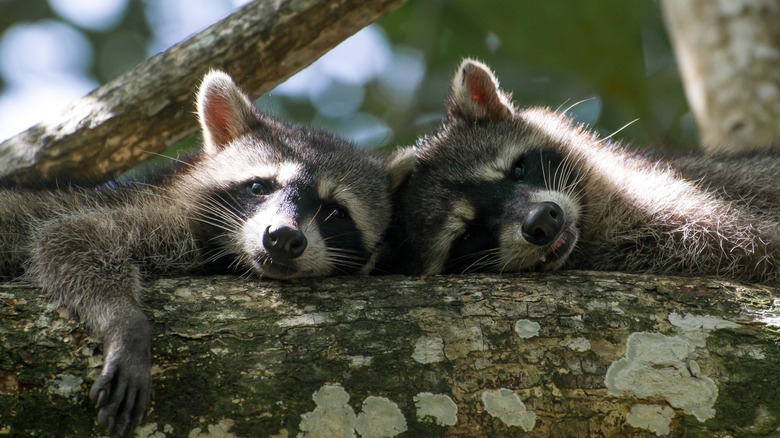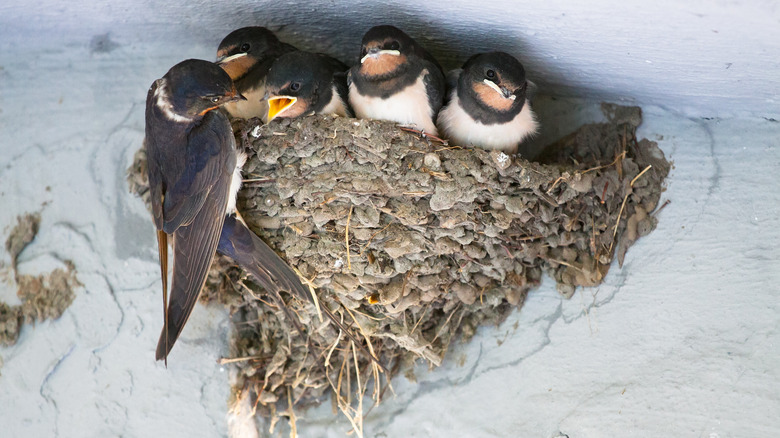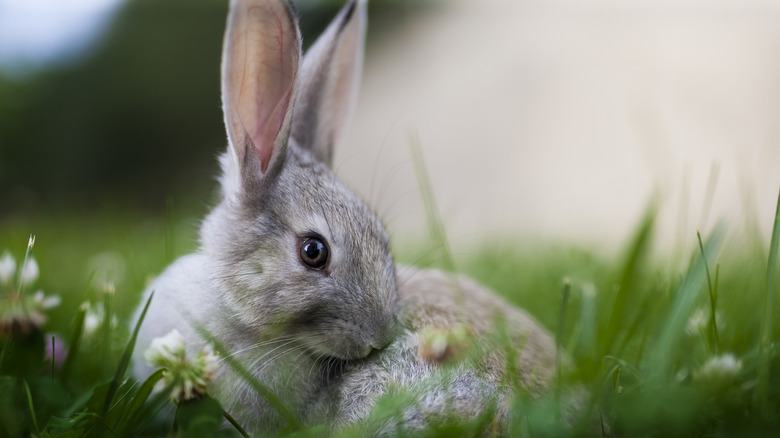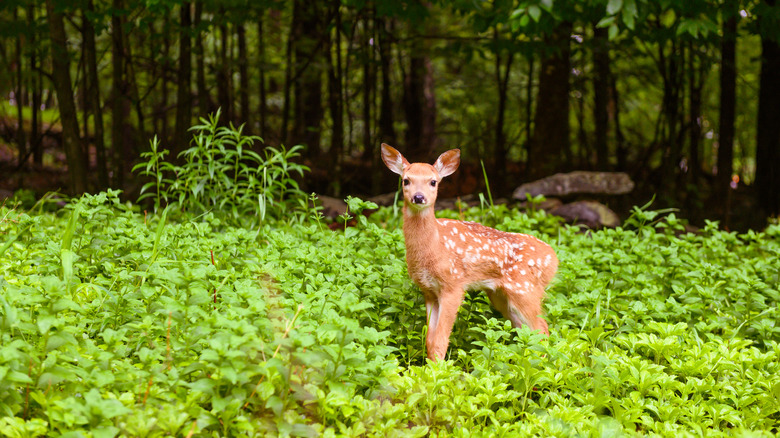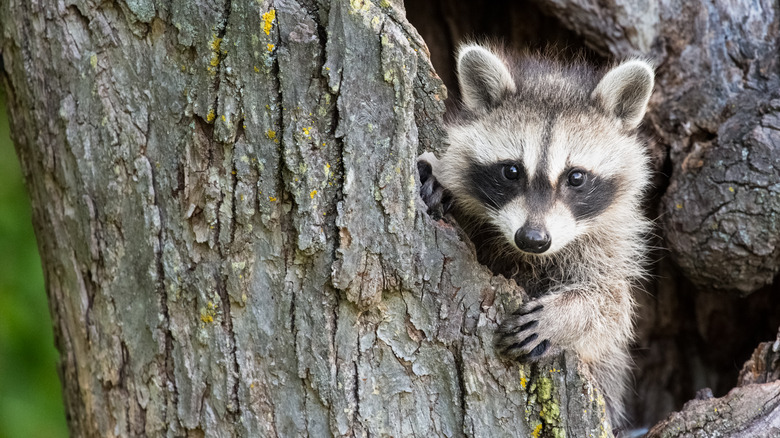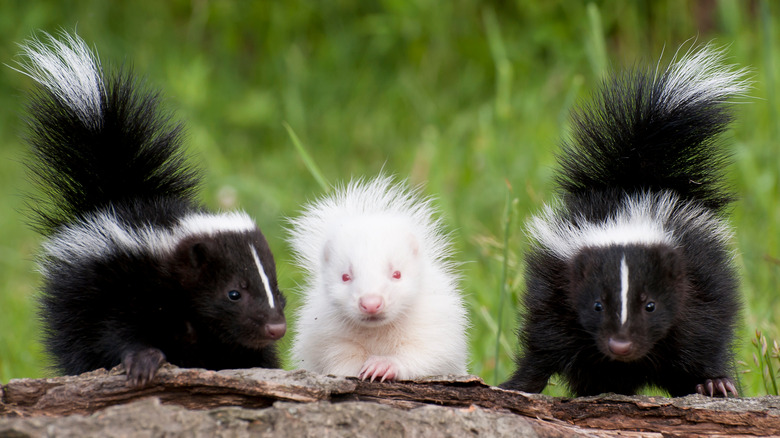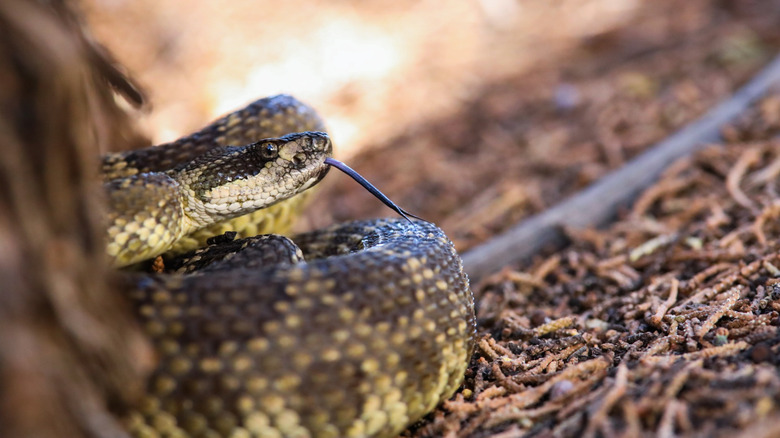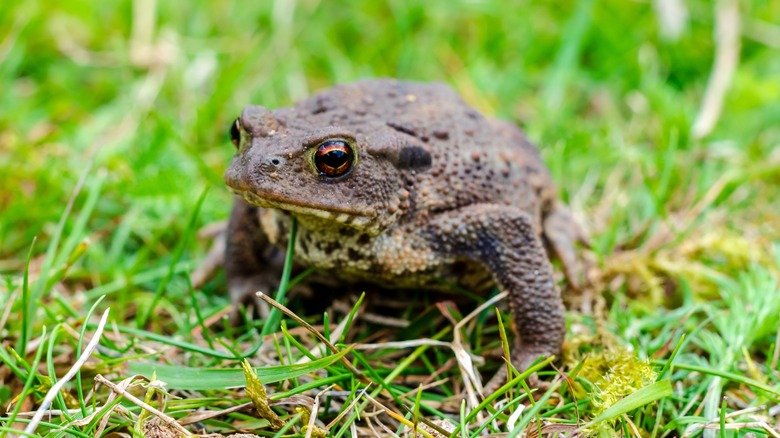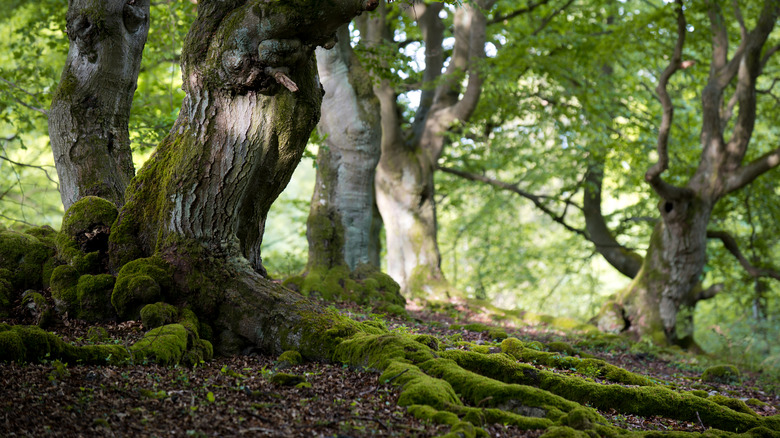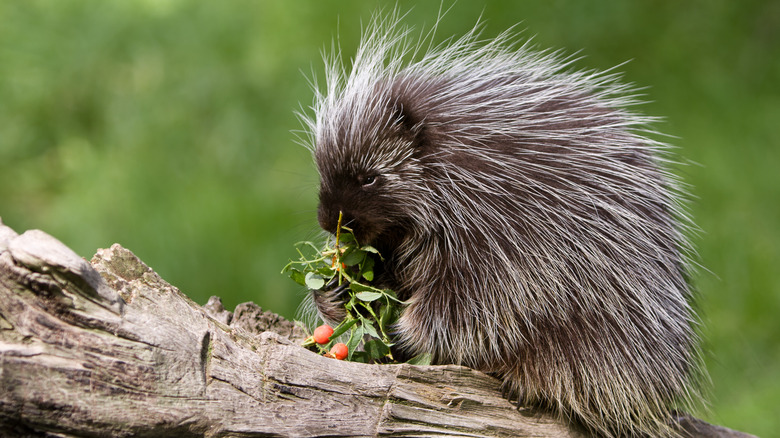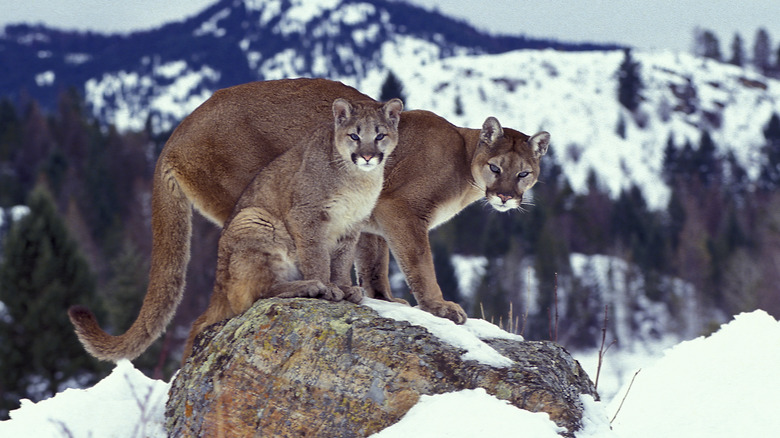The Biggest Myths About Wildlife Encounters People Believe
One of the best parts about spending time outdoors is getting to experience nature in its purest form. Listening to the wind, the trees, water, and wildlife can be serene and often better than any song. Occasionally, wildlife can get just as curious as humans, and we may come face to face with critters who want to know why we're in their space.
Wildlife encounters are typically few and far between, depending on where you live and where you're exploring. Even still, it's important to be knowledgeable about the local wildlife even if you never or hardly come face to face with it. Some of the most important rules you need to follow are to stay calm and keep your distance. However, some people still feel that it's necessary to approach or even harm wildlife because of a lack of education or common misconceptions regarding these encounters that need a bit of clearing up. These are the biggest myths about wildlife encounters that people believe.
A mother bird will abandon her baby if you touch it
A mother bird abandoning her babies if you touch them is one myth commonly heard around the home and public spaces. It's meant as a warning and could actually be considered a helpful reminder to keep your distance — though it isn't exactly true. A human scent on a baby bird isn't likely to be detected by an adult bird as birds typically have a poor sense of smell.
However, just because a mother bird won't leave her babies for dead if you touch them doesn't mean you shouldn't continue to leave baby birds alone. Human intervention can create dangerous situations for birds and their nesting. Additionally, if you see a baby bird that looks to be in danger or in need of assistance, there's a strong chance that the mother bird is close by. It's also good to keep in mind that if you do for some reason come across a baby bird and touch it, it's okay to leave it alone after. There's no reason to needlessly end its life for fear its mother will abandon it. Just admire nature, and leave it be.
A baby bunny in your yard means it's lost
Baby bunnies, or kittens as they're called, are among the cutest creatures one could happen across. Understandably, a person's reaction to a lone baby bunny would be to help it in any way possible. However, if you do see a baby bunny in your yard, or anyone else's for that matter, please leave it be and know that it's highly likely this little kitten is just investigating the world around it.
It's normal and only natural for baby bunnies to explore outside their nests. If you see one that appears a bit young, a good way to know if they're old enough to be out wandering the world is if its ears are up and its eyes are open. There may even be a nest in your yard. If you see one and it's undisturbed, leave it be. It's easy to want to help every animal we perceive as being in danger, however, almost every time the best thing we can do for it is to leave it alone.
A fawn by itself means its mother was struck by a car
This is another example of a human's desire to intervene with hopefully the best intentions. It's nearly impossible to overlook a young animal once it's been spotted, and creating a reason as to why it's alone is something humans are great at.
If you come across a baby deer alone in the woods, jumping to the worst-case scenario isn't necessary. It's common practice for mother deers to leave their babies alone for large portions of the day. Especially when they're in a location the mother deems as safe.
If you're really apprehensive about the situation, it's alright to leave and come back or monitor the situation from a far distance to either make sure the mother returns to her young, or that nothing else harms the fawn in the meantime. Distance is key though. Never approach, frighten, harm, or touch the fawn. It's likely that the mother is nearby, still watching over her baby and if you're interfering in the area, she's not going to come back. The best thing to do for the fawn is to leave it be.
A nocturnal animal out during daylight has rabies
Nocturnal animals are most active during the night. Bats, owls, raccoons, and foxes are all examples of animals that live their busiest hours on the night shift. Many believe they have almost zero chance of running into them. While the chances may be slightly lessened depending on your schedule and how you spend time with nature, there's still a possibility of seeing these critters even when the sun is shining.
You may have heard that spotting a nocturnal animal during the day means that it has rabies. This is a misconception, as there are numerous reasons for these nightlife-loving creatures to experience the world when it's lit up. Many animals will come out during the day to look for food, for themselves, or possibly for their babies. They may have been scouting a place to find something to eat, but know it's safest during the day — sort of their version of a late-night snack craving. Or, they may not have the time at night to get all their errands out of the way. However, they're by no means acting out of the ordinary by doing so. So, if you see a nighttime critter out during the day, wish it well and hope it gets some rest soon.
Only tomato juice gets out skunk spray
One of the most recognizable smells is that of a skunk. That's because these cute and fluffy animals have one of the most feared defense mechanisms available — the dreaded skunk spray. At any given time, skunks are loaded with enough musk to let out multiple sprays if they feel threatened. They're able to spray in a mist or a stream with a range of up to fifteen feet. So if you're their target, there's a good chance they're not going to miss you.
You might've heard the rumor that only tomato juice can get rid of the stench of skunk musk. The good news is, that's far from true. So no, you don't need to douse yourself in tomato ick to add insult to injury after getting sprayed. A good way to rid yourself of the stinky shame is to mix hydrogen peroxide, baking soda, and dishwashing liquid to apply to yourself and your clothing. This combination will counteract the smelly chemicals the skunk has outfitted you with. Don't worry too much though, as there will be several warning signs from a skunk before they spray. However, as with most animals, it's best to keep your distance.
Snakes are aggressive
If you've ever been camping or hiking in a location frequented by snakes, you've probably noticed there are a lot of rumors spread about these scaly friends. There's a common belief that if a human comes near a snake, it will strike. This is quite the opposite of what a snake is likely to do if it knows humans are close.
Snakes are usually just as afraid, if not more afraid of humans as humans are of snakes. The first instinct they have if they come across someone is to leave the situation. That's right, they're far more likely to slither on out of there rather than pick a fight with a passersby.
For a snake to become aggressive, it has to feel threatened in some way. This could be why people who have found snakes in their garages or gardens have stories of snakes being aggressive. It's easier for a snake to feel threatened when it's being removed from what it thought was a cozy environment, not realizing it was someone's yard. Rest assured, however, that you most likely will never have to deal with a snakebite if you don't go agitating snakes, because the snakes are far too busy hiding from you.
Toads cause warts
From fairy tales to scary witch stories told near Halloween, most people have heard that toads cause warts from one place or another. A toad's bumpy characteristics haven't done anything to clear their good name either. The truth is, a toad's best defense from humans is that a lot of humans sincerely believe that a toad will give them warts.
These amphibians, along with every other known species of amphibian, aren't able to give anyone warts. Some toads can secrete a substance that will cause skin irritation, but that's about as close as they get. As for the bumps on the back of toads? Those are glands, and a part of their lovely appearance.
For those worried about warts, you'll be happy to know that warts are caused by a virus, not toads. This doesn't mean it's acceptable to go around picking up every toad you see, but maybe it will help clear their name and make people like them a little more.
Moss always grows on the north side of trees
This one only requires a walk through a dark, damp forest for one to understand that it's a myth. It's difficult to say where the rumor that moss only grows on the north side of a tree got its start, but it isn't entirely incorrect. Moss does grow on the north side of the tree, but it can also grow on the south, west, and east sides of living, or even noticeably dead trees if the environment is right.
Moss likes damp, shaded environments because it's a non-vascular plant type. This means it has to absorb water from the environment around it because it doesn't have the biological workings to provide itself with food and water. So if the south side of the tree is getting a lot of light and the north side is shaded and perhaps a little soggy, the moss will probably only grow on the north side of that particular tree for its own survival. So, if you're in the woods and you've lost your way, don't let this myth keep you going in circles.
Porcupines shoot their quills
Porcupines are an animal that falls into the categories of both cute and intimidating to many. There's a common myth that porcupines can shoot their quills at whatever they deem is a threat to their space. Their long, sharp quills can certainly inflict pain, but no, a porcupine isn't going to open fire and launch its quills everywhere like nature's Tommy gun.
Their quills are a defense mechanism that they use when they feel threatened. Contrary to popular belief, they aren't able to shoot the quills out of their skin but if the threat is close enough, the porcupine can stick the quills into whatever it is. This is why, when curious animals come into contact with porcupines, they'll often take a few quills to the face or snout. It's okay to observe a porcupine if you see one, but be sure to keep your distance and don't disturb the animal or frighten it in any way.
Try to hide when you see a cougar
When you're out camping, hiking, backpacking, or really doing any activity in the wild, you're in someone else's home. The animals and plants that call these locations home typically try their best to avoid humans, but sometimes they either become curious or just can't avoid everyone. This is when safe practices are most important to keep the animal and yourself free of harm.
Most of the time, if there's a mountain lion nearby, it won't bother humans. However, if you do encounter a cougar, you mustn't believe the myth that you should try to hide from it. There are specific steps someone should take if they encounter a cougar. If you find yourself in this situation, try to appear larger than the cat and speak loudly and firmly to it while slowly backing away from the animal.
There are a lot of misconceptions and myths regarding wildlife encounters that have been circulating for generations, and it's important to know what's real and what isn't. Educate yourself on popular myths and the wildlife in your area. Knowing the truth about animals and plants around you could keep you — and them — safe.
